Art World
New Whitney Museum Building, Like Noah’s Ark, Could Ferry All of American Art to Safety
New building suggests that the Whitney is about to compete in a big way.
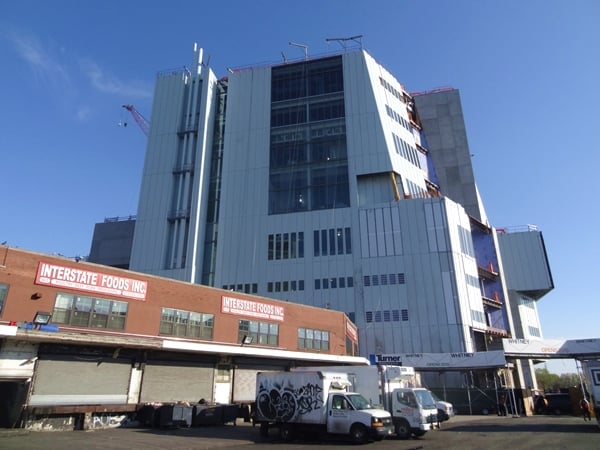
New building suggests that the Whitney is about to compete in a big way.

Benjamin Sutton

If museums are vessels for displaying art, then the Whitney Museum’s new Downtown building is a supertanker. Designed by Renzo Piano and due to open in the spring of 2015—staff will begin relocating from the Whitney’s Marcel Breuer building on Madison Avenue this fall, with the art following early next year—the new Whitney cuts a bulky, clumsy silhouette, looming over the southern tip of the High Line like a leviathan. But this bulbous exterior begins to make sense as you pass inside, moving from the inviting, glass-walled lobby to the astoundingly large galleries on the upper floors.
“We’re sitting here in what will be the board room, so you’re seeing this view before the trustees do,” museum director Adam Weinberg said during a May 1 tour of the new building, which is fewer than 10 blocks from the Whitney’s original home on West 8th Street. “In many ways, this is a return downtown for us.”
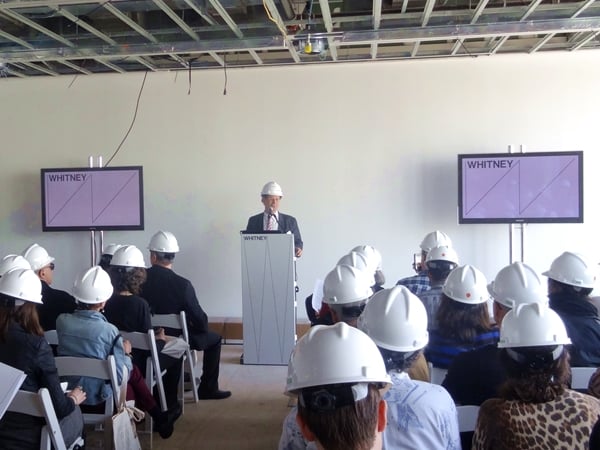
Adam Weinberg speaking at the new Whitney Museum building on May 1.
Photo: Benjamin Sutton.
No museum, Uptown or Downtown, has galleries like this. The enormity of the exhibition spaces on the fifth, sixth, seventh, and eighth floors is, well, flooring. Each one is long and narrow (but not that narrow), with a wall of glass at either end affording eastern views onto the High Line and toward Midtown, and of the Hudson and New Jersey to the west. The eastern side of the building also benefits from a series of terraces that will be used for outdoor sculptures and, on the 8th floor, a café. The 5th floor gallery in particular, with its 18,200 square feet, feels like being in the cargo hold of a Noah’s Ark built to ferry all of American art to safety.
“This is a curator’s dream gallery and we hope it’s an artist’s dream space,” said curator and associate director of programs Scott Rothkopf of the museum’s 5th floor. “We’re going to be learning this new building for a few years.”
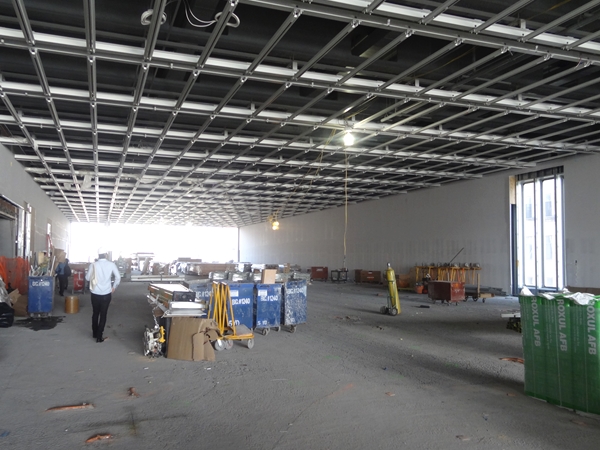
The 5th floor gallery in the new Whitney Museum building.
Photo: Benjamin Sutton.
Appropriately, the Whitney’s first exhibition in its new building—following its swan song Uptown, a massive Jeff Koons retrospective—will take up every available gallery, terrace, and public space to display works from the institution’s permanent collection. Overseen by chief curator Donna de Salvo, the exhibition will not only bring together favorites from the institution’s 20,000-piece collection—the Hoppers, the Calders, the Lichtensteins, the O’Keeffes—but also highlight little-known gems and forgotten treasures.
“This is just going to reveal the tip of the iceberg,” de Salvo said.
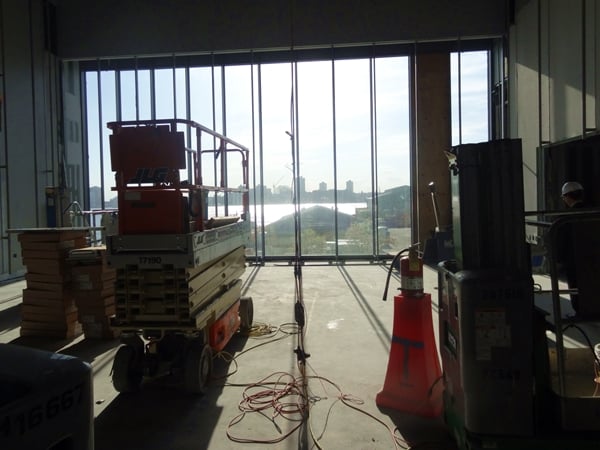
The view of the Hudson from the new Whitney Museum building.
Photo: Benjamin Sutton.
The Whitney’s first year of exhibitions in its new building is planned to include a major Frank Stella retrospective (to occupy the entire 5th floor in fall 2015), a show of Harlem Renaissance artist Archibald Motley (currently on view at Duke University’s Nasher Museum), a surveillance-themed installation by Laura Poitras, and a David Wojnarowicz retrospective in spring 2016. Amid all these major exhibitions, the museum will take a year off from its signature show; the next Whitney Biennial (whose 2014 edition closes May 25), will take place in 2017. But showstopper galleries aren’t the new building’s only amenities.
“What we’re also getting is a lot of back-of-house space that we’ve never had and badly need,” Rothkopf said.
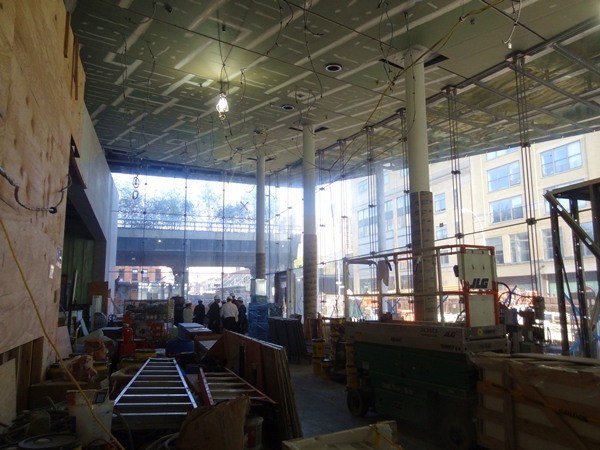
The lobby of the new Whitney Museum building.
Photo: Benjamin Sutton.
These range from nuts-and-bolts operational features like a covered loading dock—which, incredibly, the Whitney’s current building does not have—and flood barriers around the all-glass lobby to purpose-built performance, screening, and educational spaces, as well as a state-of-the-art conservation lab on the building’s 6th floor. Also on the 6th floor, a new-works-on-paper gallery with flat files will allow the public (by appointment) to see the roughly 14,000 black-and-white photographs, drawings, and prints from the permanent collection that are not hanging.
As of May 1 the Whitney had raised 86 percent (or $655 million) of the total budget for the $760 million project, much of which will go to beef up the museum’s endowment.
“I think Renzo has given us a building that is supremely responsive,” de Salvo said, “just as our programming is.”